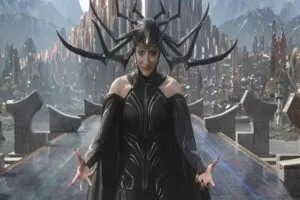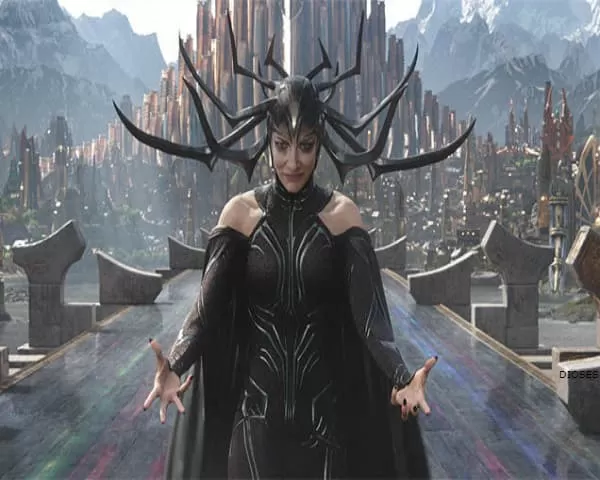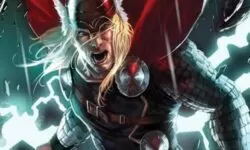Meaning of the Goddess Hel or Hela
Hel (Old Norse Hel, “Hidden”) is a giantess and/or goddess who rules over the identically named Hel, the underworld where many of the dead dwell. The meaning of her name “Hidden” surely has to do with the underworld and the dead “hidden” or buried underground.
Who is the Goddess Hela ?
According to the 13th century Icelandic scholar Snorri Sturluson, Hela or Hel is the daughter of Loki and the giantess Angrboda (Norse Angrboða, “anguish”), and therefore the sister of the wolf Fenrir and the world serpent, Jormungand. This makes her part of a highly dangerous and unworthy family. She is also the Goddess of Death in the Nine Worlds cosmology, and the Guardian of the Underworld.
She is one of the most powerful, some might say the most powerful, of all the Jotun deities. Her great stillness is one of the things people notice about her. When She sits, She may move Her hands a little to gesture, but very little else; psychically She is like a great pool of black stillness. Every movement is done with elegant, ghostly slowness.
What Attributes Does the Goddess Hela or Hel Have ?
- Hela or Hel is generally presented as greedy, harsh and cruel, or at least indifferent to the concerns of both the living and the dead.
- However, her personality is little developed in what survives of Old Norse literature.
- She is mentioned mostly only in passing. Snorri describes her appearance as half black, half white and with a perpetually stern and fierce expression on her face.
- She is also said to have blue skin and her appearance was half skeleton and half human.
- In mythology she is described as half living and half dead, with one side of her face alive and bloodthirsty. And the other blue and cold.
- Some portray her as a partial damsel, a partial skeletal corpse, and the colors black and blue are a poetic reference of the time meaning dead.
- She usually appears in her half-rotten or half-skeletal form, split vertically in the middle. His hair is usually pale and long on his living side, though sometimes it is black.
- Sometimes she has appeared living above the waist and rotting below it; Sometimes as a pale white woman who simply smells of rot. (In fact, the smell of rot is always present with her, and is a good way to tell that she is actually talking to Hela.
- Hela is tall, usually dressed only in a long, simple black or gray robe, and does not stand on ceremony. Several people have described her as having a low, quiet “whiskey and cigarettes” voice, and she moves slowly and sometimes with a skeletal foot limp.
What is the power of Goddess Hel ?
Some of her powers were:
- Immortality: as a god, Hel was not subject to old age or natural death.
- Invulnerability: conventional weapons could not harm Hel.
- Possession: rather unique among the gods, Hel needed a human host to be on Earth, but she could only manifest in a dead body that had been specially treated to maintain her presence. Superhuman strength
History of the Goddess Hela or Hel
Hela was the daughter of Loki and Angrböda, a giantess with whom Loki had an affair. Her brothers were Jörmung and the great serpent and Fenrir, the terrifying wolf. Odin and other high-ranking gods had heard terrifying prophecies about the three brothers and resolved to do something about it before they could cause too much trouble.
They threw Jörmungand into the sea, locked Fenrir in unbreakable chains, and Odin cast Hel into the realm of Helheim, or Hel for short. There, she was to make lodgings and be responsible for souls who died of sickness or old age, which he hoped would keep her busy.
When Loki tricked Hodr into throwing the mistletoe spear that killed Baldur, Baldur was driven to Hel. Odin sent his son Hermod to plead for Baldur’s return to the land of the living. Hela, realizing that, for once, she had the upper hand, agreed to one condition: that everyone would weep for Baldur to prove that he was as beloved as everyone said he was.
Hermod returned the news to Odin, and indeed the world and everything in it wept: except for one giantess, who was Loki in disguise. As a result, Hela held Baldur hostage until Ragnarök. Helheim was said to be beneath the roots of the Yggdrasil tree. The tree was said to hold the nine realms and Asgard, along with the Spring of Knowledge where Mimir resided.
Hela is attested in the Prose and Poetic Edda, in Hemskringla and in the Egils saga. She is mentioned in the Gesta Denorum, and her name appears on bracteates (thin metal discs worn as jewelry) from the migration period, in Skaldic poetry, and in Setre Comb, a 6th century archaeological artifact.
Its name is the same with the domain over which it rules, meaning “hiding” or “hidden place”. The location of Hel, also known as Helheim, is sometimes found at the northernmost tip or sometimes described as Located beneath one of the three roots of the world tree Yggdrasil.
Snorri writes that Hel is in the realm of Niflheim. Regardless of its physical location, Hel’s bridge is always protected by a vicious and bloody dog named Garmr, from whom even Óðin turns away. Although her brothers are the monstrous agents of the end of the world, Fenrir and Jörmungandr, Hel herself is a welcoming, if somewhat surprising, figure.
The pagan tradition, which comes to us through a filter of Christian perspectives, seems confused as to whether she is a divine or demonic figure, as she is both beautiful and distressing. The expression “going to Hel” originally meant simply “going to death.” While her brothers represent chaos and pain, Hel represents the reprieve that death brings to those who suffer in the end, and in the older story she comes out divine rather than demonic.
She shelters the god of light, Baldr and his retinue, and provides them with a safe place to hide during the ravages of Ragnarök, ensuring their triumphant return to the new world that emerges afterwards. Hel is the daughter of Loki and Angrboða, and is assigned dominion over the underworld. The Óðin requires her to give shelter to all who die of sickness and old age, to anyone who dies a “straw death.”
Myths about Goddess Hel
Origin of the Goddess Hela
Once there was a giantess named Angrboda, who lived in a place known as Giantland. At one point in her life, Angrboda entered into a relationship with the demigod of Aesir, Loki, and it was from that union that they had three children.
The first child was the devouring Lupin, Fenrir (Fenris). The second child was the wyrm, Iormungard, the Midgard serpent of the ocean surrounding Earth, while the third child was simply known as Hel. These three children had spent much of their childhood growing up in Giantland. In Aesir’s Kingdom of Asgaard, several prophecies had been passed down to the gods, warning them that three unique siblings would appear who would bring such a terrible disaster, that nothing but evil would come of it.
When the gods learned of the children, they realized almost immediately that they might be the very children they had been warned about. At first, they decided to believe that it was simply due to their mother’s terrible nature. Then, after considering it for a while, they realized that the children were the same ones mentioned in the prophecies; however, it was not because of who their mother was that caused them so much concern; it was actually because of who their father was.
Their father was Loki, who was known for causing great destruction and evil. Loki was also the brother of Odin, the leader of the Aesir, which was a patriarchal and warrior tribe of Norse gods and goddesses. Since there was no doubt that the children were Loki’s, Odin decided it was best to search for them and then return them to Asgaard. That way they would be raised as Aesir.
To accomplish that, Odin ordered the gods to travel to Giantland, find the children and then bring them back to Asgaard. The gods did as Odin wished, and when they returned from Giantland the three children were with them. Sadly, the child whose name was Hel had been born with bones on one side of his body, completely exposed.
That made things extremely difficult for Hel, because her appearance made the other gods so uncomfortable that they avoided having anything to do with her. Being seen as an oddity, being avoided and having no friends was very difficult for Hel to deal with.
She was extremely unhappy, and filled with great loneliness and despair. After much deliberation, Hel made an important decision. She went to Odin and explained how difficult her life was, and then asked his permission to leave Asgaard. Odin sympathized with Hel, so he granted his wish.
Much more importantly, he also gave him the World of Niflheim, one of the Nine Worlds of Norse Mythology, to rule. He even went so far as to name that place after her, calling it Helheim or Hel. Thus it was that Hel became the goddess of the dead.
In exchange for giving her Niflheim, Odin gave Hel certain responsibilities that she had to fulfill in that realm. He charged her with caring for the souls of people who had died of disease or old age, and the souls of anyone else whose deaths had not occurred through violence or in battle.
When warriors died in battle, their souls were divided equally between the goddess Freyja and Odin. Freyja had the privilege of taking the first half of the souls of those warriors who had died in battle, while the remaining souls of the dead warriors belonged to Odin.
Hel took up residence in her Realm, and when the souls of the dead arrived there, it was she who judged them. It was also she who decided whether their souls were good or bad, and to what degree. Then, after Hel made her evaluation, she gave each soul its just reward.
Depending on how they had been judged, the souls of the dead took up residence in one of Helheim’s nine levels, ranging from what could be seen as a form of heaven, to the dark horrors of Neostrand (Naströnd).
The abode of punishment, where serpents constantly spewed venom on the wicked, and which in many ways seemed to be quite similar to the concept of hell, which Christians have always seemed so fond of.
Hel and the death of Baldr
One of the surviving myths in which she excels is that of The Death of Baldur. The beloved god Baldur was killed by none other than Hel’s father, Loki, and the gods sent an emissary named Hermod to Hel in hopes of retrieving Baldur.
Hermod pleaded with Hel, telling him that every living thing was saddened by the loss of Baldur. But Hel would not give up his prize so easily. She told Hermod, mockingly, we may imagine, that she would only consent to release Baldur if all things in the universe mourned for him.
Hermod and the other gods turned around and got almost everything in the cosmos to weep for Baldur. Only a giantess, who was probably Loki in disguise, refused. But because of that refusal, the terms of Hel’s offer were not fulfilled, and Hel kept Baldur in his cold clutches.
Hel and Helheim
There were various rumors that Loki and Angrboda had worked dark magic to ensure that their daughter would be the Goddess of Death; other rumors said that they had simply foreseen that it would be so, and married to make it happen. Whether by chance or by planning, it was a great disappointment to the other races, who had hoped to wrest the Deathlands from the control of Jotun’s hands.
Odin quickly placed a “banishment spell” on little Hela, which basically forbade her from entering Asgard and, in fact, she has never set foot there. When Hela came of age, she took over Jormundgrund and completely recreated it, renaming it Helheim. Mimir handed over the care of the place to her and left, and she went to Asgard to live with the Aesir who had promised her a place of honor for her wisdom.
Instead of caves and dampness, she opened it to the black sky and planted orchards, and grass grew over the burial mounds. She built Castle Elvidnir and vowed that no matter how many Dead, she would find a way to feed them all, if only sparingly. She redesigned Helheim in such a way as to bring the utmost tranquility to those who reside there;
Instead of dank caves, it is an ever-changing tapestry of hills, fields and colorful autumn forests. Since then, she has diligently tended to her Dead, of whom she feels fiercely protective. She observes necromancy and other forms of magic used to “disturb the Dead,” though she will allow Seidhr workers and others who respect her boundaries to enter a special area near Hel’s Gate, and speak with whatever the Dead desire.
Son of the Goddess Hela
There is no documentation of the existence of children of the Goddess Hel, in none of the stories or prose there is any information on this subject.
Temples of Goddess Hela or Hel
Due to its origin or origin, there is no information on temples built in honor of this goddess, if there is evidence of worship, but it is not known in any of the stories, any existence of temples.
Related Topics
Other Gods of Mythology in ALPHAPEDIA
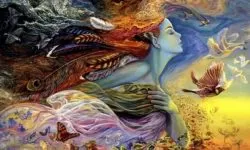
THE GODDESSES OF MYTHOLOGY: Their Names and Meanings
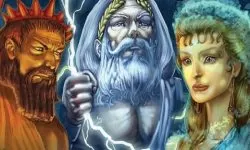
GREEK GODS: Names, Family Tree and Their Powers
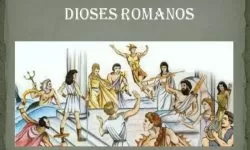
ROMAN GODS: Names, Meanings and Characteristics
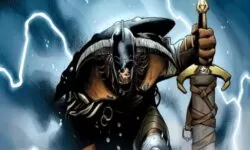
NORSE GODS: Names, Meaning, Powers and History
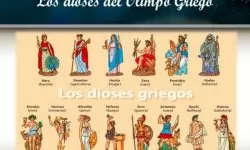
OLIMPUS GODS: ¿ Who Are ? ¿ What Are ? Names and Powers
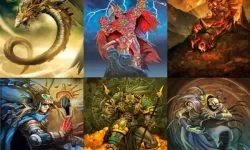
AZTEC GODS: List of Names, Meanings and Powers
Other Topics of Interest in ALPHAPEDIA

FREE CONSTRUCTION MANAGEMENT COURSE

FREE BACHELOR DEGREE IN CYBERSECURITY

FREE DOCTORATE IN URBAN PLANNING

FREE MASTER DEGREE IN ELECTRICAL ENGINEERING

MUSTARD COLOR: Psychology and Meaning

FREE CERTIFICATE PROGRAM IN LEADERSHIP
Images, Pictures or Drawings of Goddess Hela
